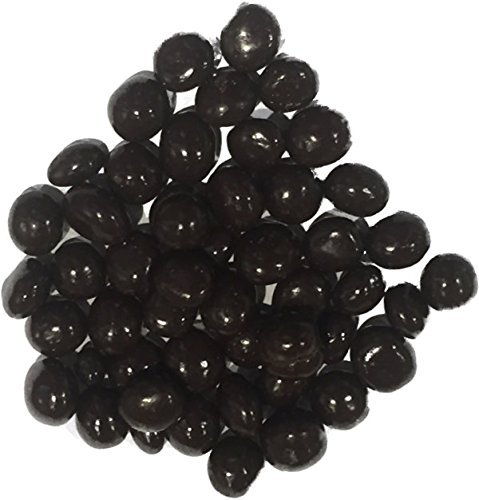How To Outsmart Your Boss On Coffee Beans Types

Coffee Bean Types: Arabica, Robusta, Liberica, and Excelsa
If you're a coffee lover you're likely aware that different types of beans have distinct flavor profiles. Find out about four of the most well-known varieties: Arabica. Robusta. Liberica. and Excelsa.
Excelsa beans are a kind of Liberica that is only grown in Southeast Asia. They have a tangier, tarter flavor profile and are frequently used in blends of beans to give them added depth.
Arabica
Arabica is the most well-known coffee in the world and accounts for 75% of the global coffee beans produced. Arabica beans are softer and sweeter than Robusta and are available in a variety of flavours. The taste and aroma components of a coffee can vary greatly based on the climatic conditions and methods of processing employed to make it.
The word "coffee" originates from the Arabic word for berry and coffee beans are fruit seeds that are cultivated inside bright red berries. It is believed ancient Ethiopian shepherds noticed that their goats were stimulated by eating these fruit berries. coffee beans online Coffeee of coffee grew quickly across the globe.
Coffee beans can be grown at high altitudes, and are capable of flourishing when exposed to cool temperatures and plenty of rain. This is the reason Arabica coffee is considered to be the best tasting type of coffee.
Many specialty coffee shops and roasters are focused on the ethical sourcing of arabica beans, focusing on fair wages for farmers and sustainable farming practices. These companies often blend arabica beans to make unique signature coffees that work well with many different methods of brewing. Blending gives control over the taste, aroma, body and acidity of coffee. It is typically preferred to get an even and balanced taste that appeals a wide market.
Robusta
Robusta beans are the second most coveted kind of coffee bean around the world. They have a higher caffeine content per bean than Arabica, and are more resistant to pests and disease. They also contain more chlorogenic acids, which are naturally-occurring antioxidants. However, these acids may cause oxidation during the coffee brewing process and may produce undesirable flavors.
The plant is more durable than the arabica and is able to grow in less favorable environments. It can tolerate higher temperatures and thrives in direct sunlight. It is faster growing and produces more coffee per plant than arabica, making it a cheaper crop to grow.

While it might seem contradictory Robusta beans are frequently combined with arabica to create coffee blends. If you've seen the names of countries such as Uganda or Kenya listed on a coffee bag, it's likely that there's some robusta in there as well.
Although some roasters exclusively use arabica beans, the majority use mix the two varieties in order to cut costs and ensure the quality. To maintain the integrity of the flavor, it's crucial to choose a high-quality beans from a source you trust. The best method to achieve this is to buy your beans directly from the farmer.
Liberica
Liberica beans are more or less football-shaped and are therefore distinct from other varieties of coffee beans. They are characterized by a smell that is floral, fruity and smoky. They are often added to other bean varieties to add an extra, stronger flavor.
Liberica coffee beans are grown in West Africa and Malaysia (Borneo) as well as in Southeast Asia. They are tolerant of hot, humid climates and can thrive at low altitudes. They also have a better resistance to diseases than Arabica and Robusta.
These qualities make them perfect for home cultivation. The seeds can be found online from many sources, but it's preferred to purchase them from local producers to ensure the quality of the beans. The best conditions for growing Liberica coffee include fertile deep volcano soils that have moderately acidic and adequate annual rainfall.
Another kind of coffee bean is Excelsa, which was once considered to be a separate species but was re-classified as a variation of Liberica. These coffee beans are elongated ovals that grow on 20-30 foot coffee plants that are situated at medium altitudes. Their distinctive taste is tart and sour, which makes them a popular option for house blends. They have a lighter flavor and lower caffeine content than Arabica or Robusta but they still have a distinct flavor.
Excelsa
Excelsa coffee beans aren't as well-known as Arabica and Robusta yet they're the fourth most popular. In fact, they were considered a separate coffee plant species until 2006 when they were reclassified as an alternative to Coffea liberica var. dewevrei. Nowadays, they're grown mostly in Southeast Asia and account for 7 percent of the world's coffee production. These coffee beans are distinctive with a teardrop shape, and a dark, mysterious taste. They're often used in blends to give extra body and a delicious, tart, ripened fruit taste.
Arabica beans are the most sought-after, and are renowned for their more sweetness. They thrive at high altitudes and enjoy warm, tropical climates. They also have a hint of acidity. If brewed correctly and roast they can be a bit sweet with hints of nuts, chocolate, or even fruit.
Robusta is a close second to Arabica and is responsible for about 40% of the world's coffee. These beans are smaller and rounder but they have twice the amount of caffeine as Arabica. They also have more bitterness than the other two varieties and are more likely to have woody and earthy undertones.
After you've learned about the four most common types of coffee beans and the four most popular types of coffee beans, it's time to select the perfect coffee. If you're looking for a smooth soft, delicate flavor, go for an arabica bean or a blend of robusta and arabica beans.
